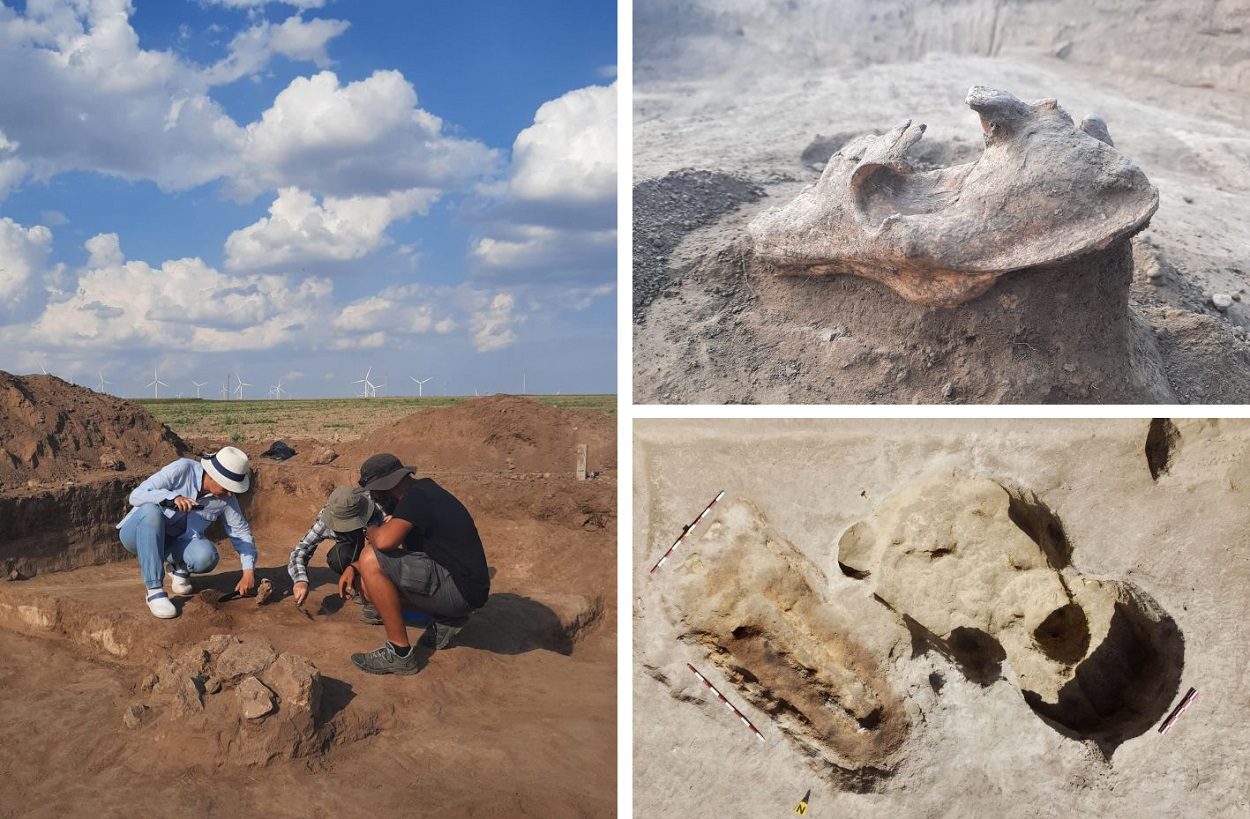Archaeologists excavating a burial mound in Romania’s Dobruja region have suggested that a wolf skull was deposited by grave robbers to protect them against the deceased’s spirit.
The mound dates from around 2,000-years-ago and has been mostly ploughed out, however, a geophysical study indicates that it originally had a diameter of up to 75 metres.
A burial at the centre of the grave had a pit covered with wooden boards where the deceased was cremated inside a wooden structure. This is evidenced by small amounts of bone, a fragment of a clay lamp, and partially burnt wooden remains from the structure which was joined with nails and decorated with bronze fittings.
Excavations also revealed a large number of burnt walnut seeds, pine cones and other plant remains, which is common in cremation burials from the early Roman period. Barrows with similar cremation burials were discovered in the town of Hârșova, known in the Roman period as Carsium on the lower Danube.
The grave was robbed during antiquity, with the grave robbers depositing a wolf’s skull on a pile of stones which closed their robbery ditch. Dr. Bartłomiej Szymon Szmoniewski from the Institute of Archaeology and Ethnology of the Polish Academy of Sciences, said: “It was probably a ritual aimed at closing the looted space in order to prevent exit and the revenge of the plundered spirit.”
According to Dr Szmoniewski, the burial was likely robbed by the Getae, a Thracian-related tribe that once inhabited the regions to either side of the Lower Danube.
A second burial was also discovered in the barrow, where the researchers found a skeleton inside a wooden structure. Placed upon the skeleton is a glass unguentarium, a container for holding fragrances and perfumes, and a bronze coin from the reign of Hadrian (issued in AD 125-127) that was placed in the deceased’s mouth.
“Placing a coin in the mouth refers to the ancient custom of Charon’s obol, when a coin was used as payment to Charon for transporting the deceased’s soul across the River Styx in Hades,” said Dr Szmoniewski.
Header Image Credit : BSSzmoniewski & Șt. Georgescu





